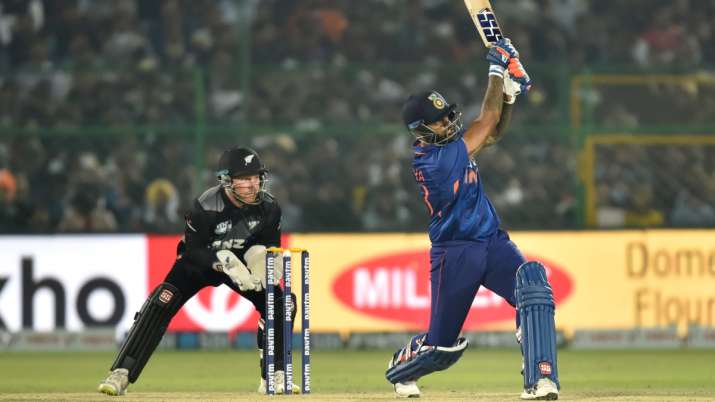

The Qualifiers feature six teams including hosts UAE, Kuwait, Malaysia apart from Nepal, Bhutan and Hong Kong. Nepal will play against Bhutan in their second match on Tuesday. Rai conceded 14 runs in her two-over bowling. Kunwar and Rana Magar both gave away 18 runs in their four-over spell each. Nepali bowlers Kunwar, Rana Magar and Sabnam Rai picked one wicket each.
#What is a wicket in cricket scoring cracked#
Mile cracked three fours in her 13 ball knock while Chan hit two boundaries facing 22 deliveries.Įmma Lai remained unbeaten on 14 off 12 while Shanzeen Shahzad scored seven runs. Natasha Miles and Kary Chan made remarkable contributions for Hong Kong scoring 16 runs and 17 runs respectively. But her opening partner Mariko Hills contributed not out 42 runs to rescue the innings. when the ball goes past the wicket-keeper/catcher without having been touched by the batter, and runs can be scored (much like stolen bases on wild. In the run chase, Hong Kong lost opener Yasmin Daswani for just two runs after she was caught by Kajal Shrestha off Kabita Kunwar in the third over with just three runs on board. Kary conceded 16 runs in her four-over bowling. Betty gave away just 12 runs in her four-over spell with just one maiden over. Hong Kong bowlers Betty Chan and Kary Chan grabbed one wicket each. Nepal were also gifted with extra 27 runs. Captain Rubina Chhetry remained unbeaten on two runs. Barma hit three boundaries in her 37-ball knock. Following Shrestha's departure in the fifth ball of the eighth over, Indu Barma and Rana Magar played a 81-run stand for the third wicket before Barma was dismissed for 31 runs. Her opening partner Rana Magar hit four fences in her 48-ball knock.īut Kajal Shrestha, who came to bat at number three, played a sluggish innings collecting four runs in 23 deliveries. Nepal got an early jolt after opener Kabita Kunwar was out for a duck in the very second delivery of the innings without opening score. In reply, Hong Kong chased the target at the cost of four wickets with two overs to spare. It?s also something that anybody can do well, however good or bad his batting may otherwise be.Put into bat first, Nepal came up with a poor show and were restricted to 104-3 at close despite opener Sita Rana Magar scoring unbeaten 40 runs. Do not commit yourself to a run until the caller has called YES.įollow these rules and you will virtually never be run out (nor will you run out anybody else) your individual score and the team?s score can be doubled by good running between the wickets. It follows that the one place the batsman should never hit the ball is straight back down the wicket (unless it is either very hard – 4 runs – or very soft – 3 yards).ġ2. The non-striker should reckon to back up 7 yards. For action, see above, followed by either YES or NO. The caller (see 8) should call WAIT almost immediately after the ball is played. WAIT means: go as far as you possibly can out of your crease but can get back if the fieldsman throws down the stumps. NO after second thoughts, or YES for very cheeky run) should be very loud indeed.ġ1. “wait on” is meaningless “wait there” really means no and is thus ambiguous “not now” (later, perhaps?) is merely an admission of incompetent calling. There are only three calls, all of which should be shouted: NO ALWAYS MEANS NO (from either batsman), whoever is supposed to do the calling (see rule1).ġ0. The non-striker calls for a ball hit behind.Īfter the first run, it is for the man running into danger (normally to the wicket-keeper’s end) to call.ĩ. CALLING: The striker calls for a ball hit in front of the wicket Be careful when bowlers bowl from the “wrong” side.Ĩ. Do not run down the wicket it won’t improve its quality. The striker must run straight at the bowler – the non-striker is the other side. Otherwise just dab the bat down and turn.ħ. If you have misjudged a run and may be run out, run your bat in almost parallel to the ground – the extra few inches may make all the difference. Change the bat from right hand to left etc., so that as you touch the bat down, you can look up to see the fieldsman (rather than have to turn round). Don’t continue your triumphal progress past the wicket.ĥ. At the end of each run EVEN IF YOU THINK ANOTHER IS UNLIKELY, always turn to look for another, and call WAIT (see below). Run every run as fast as possible, but particularly the first one. Do NOT run unless it is a very easy run for the following:Īll these are dangerous since, for different reasons, batsmen feel an instinctive urge to run whether it is safe to do so or not. Never give up it makes it too easy for the fieldsman.ģ. Your attitude should be less “I shan’t run unless I obviously can’t than” “I will run unless something stops me”.ġ. Aims: not merely to score more runs, but also to gain the initiative, feel more confident, to rattle the fielding side, and to unsettle the bowlers ? thereby making it easier for you to score runs by orthodox strokeplay.


 0 kommentar(er)
0 kommentar(er)
